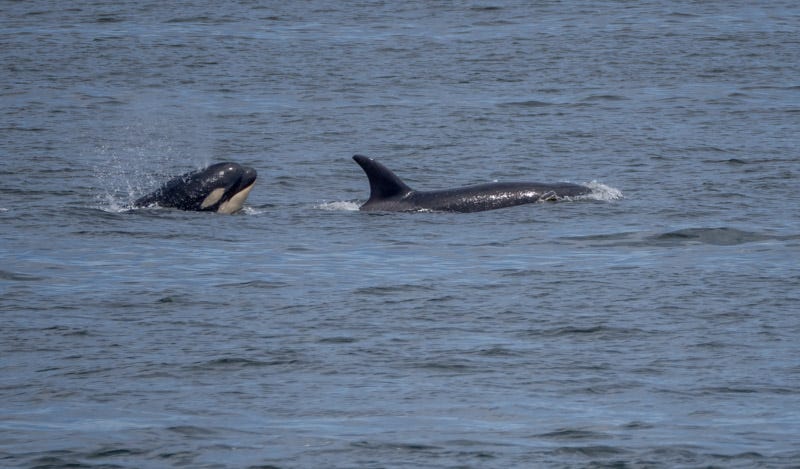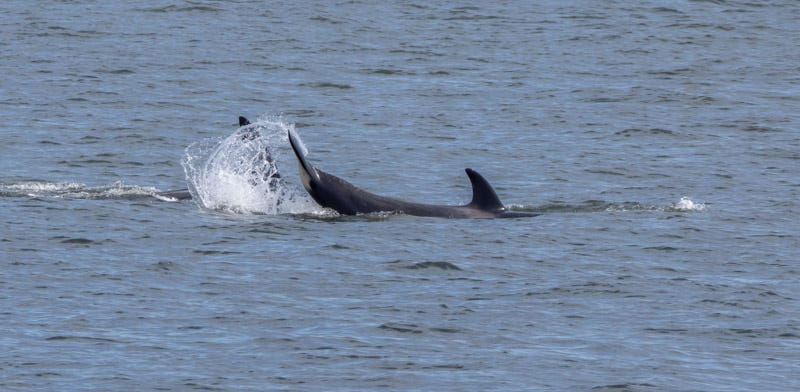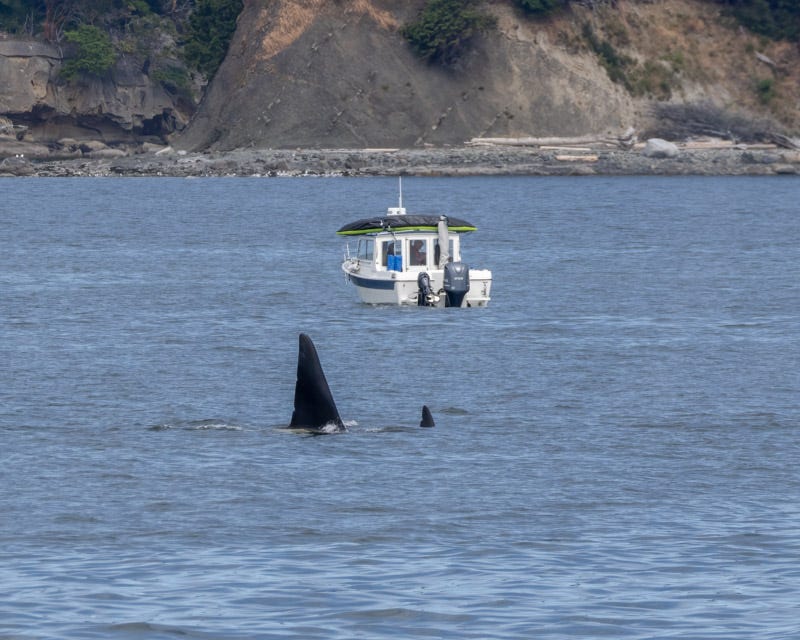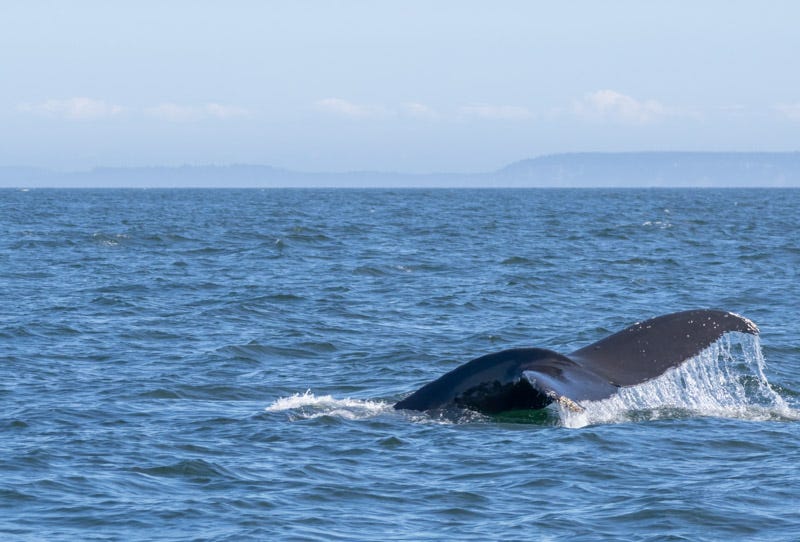Orca and Humpback Whales
We saw both on whaling outings from San Juan Island
As hot and dry as it's been in Tucson, I thought it would be healthy to look back at the cool blue ocean for a bit. When we were on the San Juan Island in June, we took two boat trips through the waters around the San Juan Islands in search of whales. The first trip, on an 85 foot long boat called the Osprey, caught up with a family of resident Orcas.
Orcas, also known as Killer Whales, are the largest members of the dolphin family. The largest can grow up to 32 feet (10 meters) long and weigh up to 11 tons. PBS has a fact sheet on Orcas with more information about them.
This family had one young whale swimming with them. There are three resident families of Killer Whales in the Salish Sea. This family was travelling along at a leisurely pace. We were always trying to guess where they would surface as we never knew how long they would be under water or whether they would change directions.
This was as much as the whales would show above water and even this little bit rarely happened. The whales were not showing any special behaviors like breaching, spy-hopping, or flipper slapping. Often we might see some spouting, with a cloud of mist shooting above the water. There was just a small amount of surfacing like in the photo below.
Occasionally on a whale's shallow dive we would see the upper (dorsal) surface of the whale's tail as it slid under water.
This is the only shot of tail slapping that I saw.
There were a number of boats around the area. All of the whaling tourist boats communicate with each other to locate the resident whale families. Once whales are spotted, the boats must keep a specified distance from the whales. Even so, with boat drift and the whales swimming, there are times when the whales come closer to the boats. Most often, all we would see would be the dorsal fins (up to 6 feet in length) above the water before the whales disappeared again.
On our second whale trip we were on a smaller boat called the Kestrel. We were getting ready to head back to Friday Harbor when the captain learned that there was a nearby family of Humpback Whales. Needless to say, we all voted to head in that direction and prolong our outing. Humpbacks are much larger marine mammals than Orcas, reaching as much as 60 feet long and weighing up to 40 tons according to this PBS fact sheet.
You can see that the Humpback Whales have a much smaller dorsal fin than the Orcas have. It was exciting to see the Humpbacks and compare them to the Orcas we had just been watching.
For a desert rat like myself, just being in open water was special, but seeing these huge, magnificent ocean mammals was very rewarding.











Hi Dan, Fabulous images of the Southern resident orcas! Did the operators say how the population was faring? I read recently that cetologists in the area feared that this population was going extinct. I spent ten summers in the Inside Strait (Johnstone Strait/Blackfish Sound) kayaking with the Northern Residents. I even paddled with them at night!
It's hard to convey the thrill one feels when watching these magnificent species in their element. You brought back some very old thrills from before I had any decent photographic equipment. Thanks for the memories and glad you share your great photos.